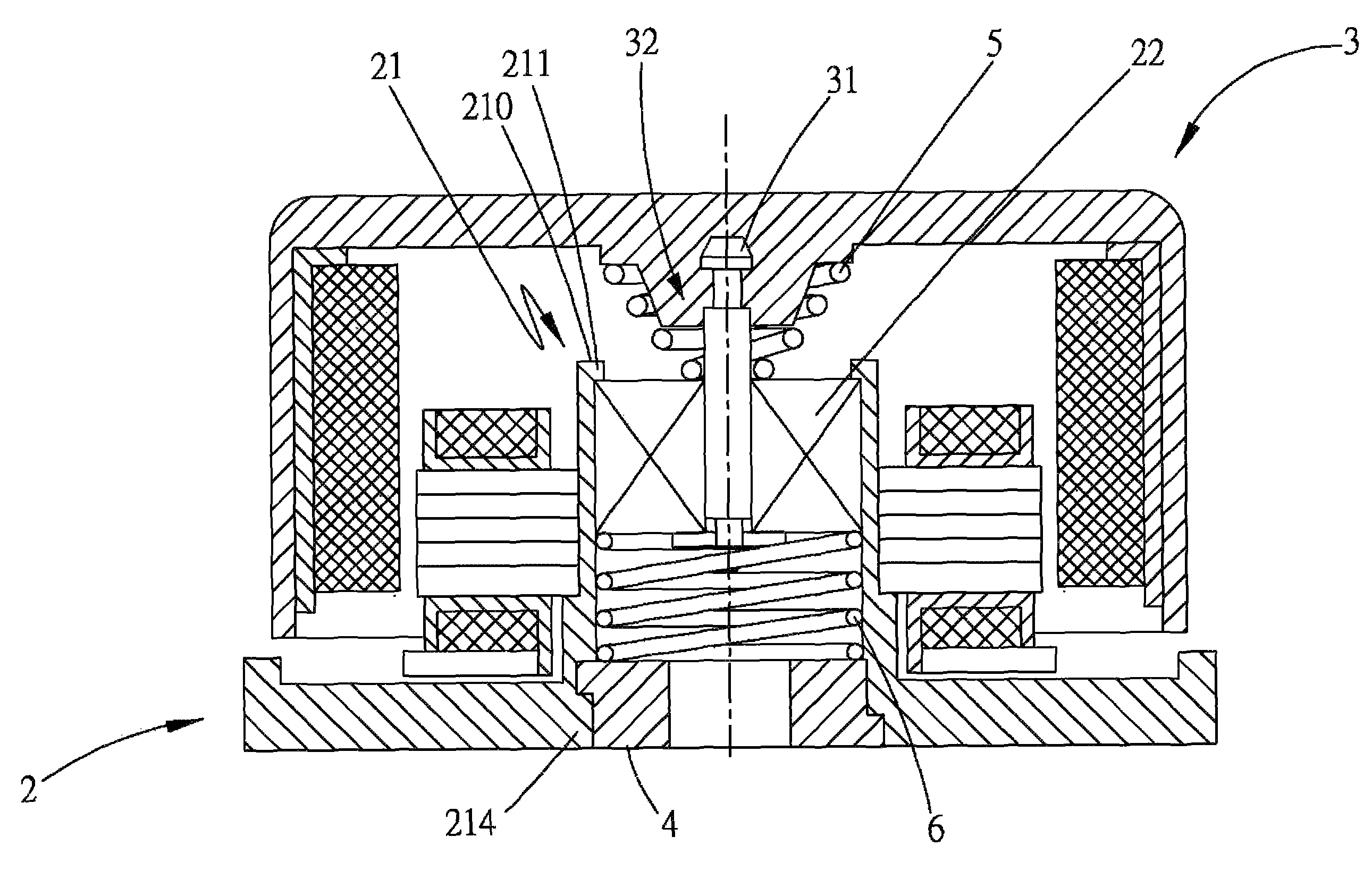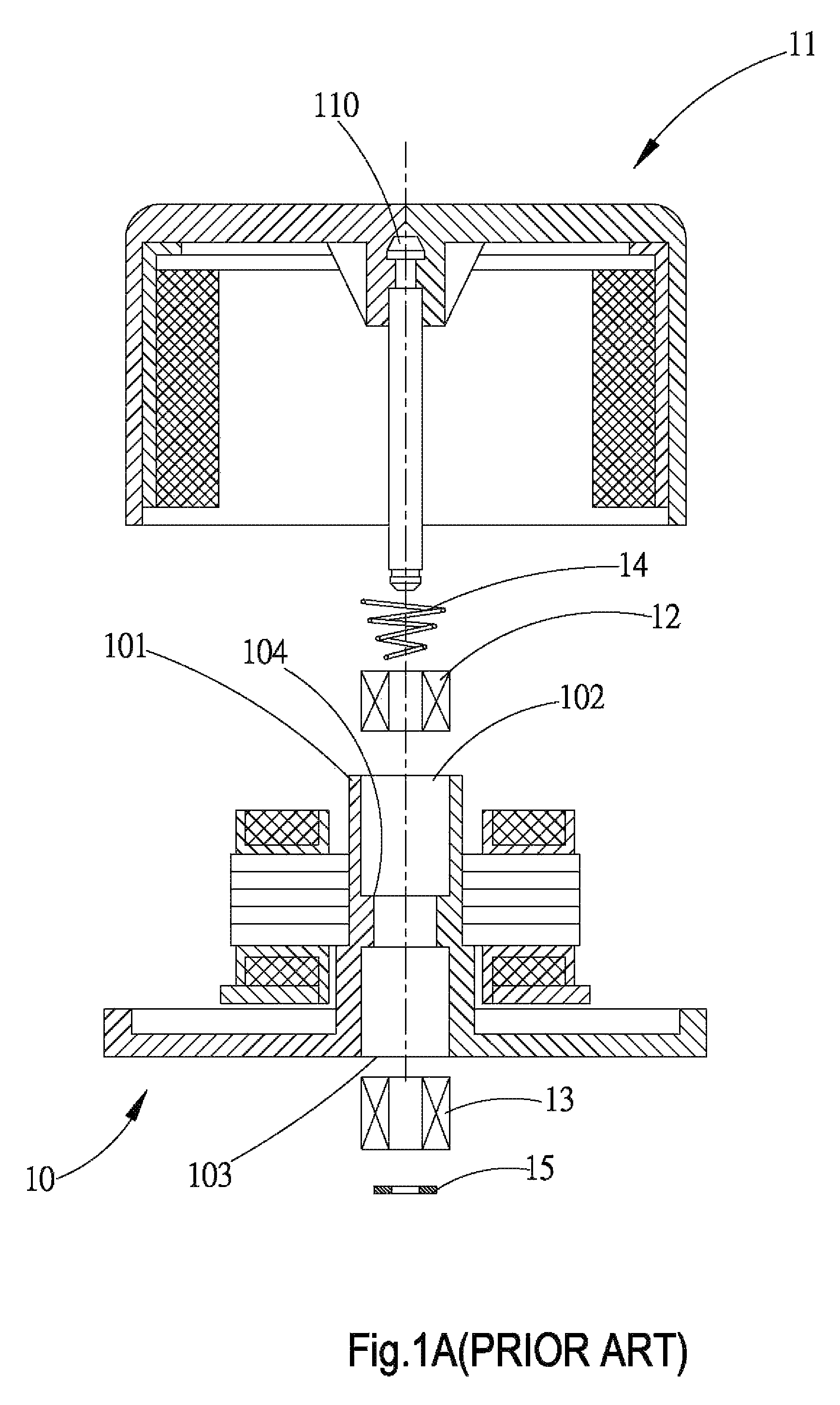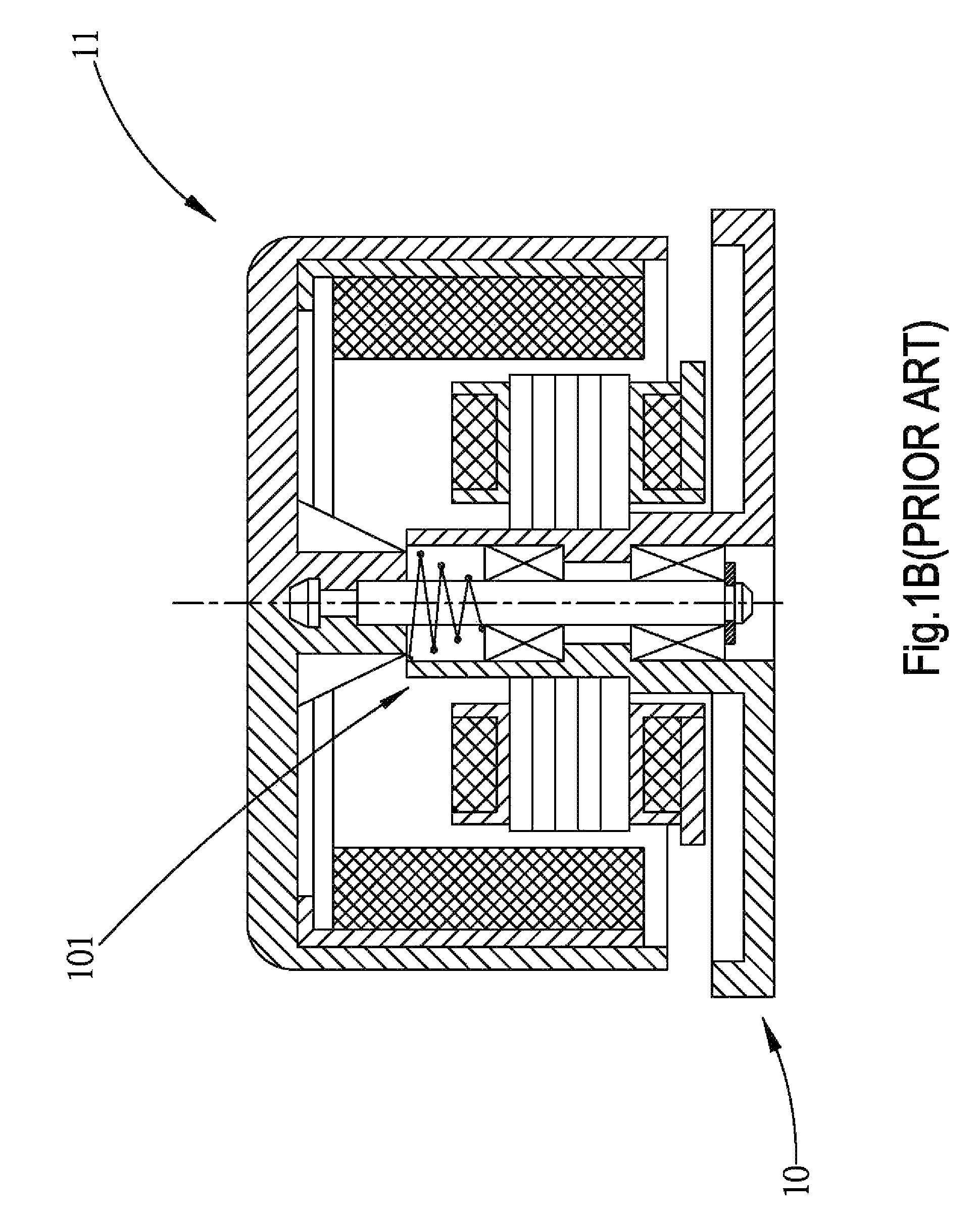Single-bearing fan structure
a single-bearing, fan technology, applied in the direction of machines/engines, mechanical equipment, liquid fuel engines, etc., can solve the problems of failure of products or even more serious problems, noise, and endanger products, so as to reduce the noise produced by the fan structure, reduce the cost, and ensure the stability of the fan structure
- Summary
- Abstract
- Description
- Claims
- Application Information
AI Technical Summary
Benefits of technology
Problems solved by technology
Method used
Image
Examples
Embodiment Construction
Please refer to FIGS. 2 and 3 that are exploded and assembled sectional views, respectively, of a single-bearing fan structure according to a preferred embodiment of the present invention. As shown, the single-bearing fan structure includes a fan frame 2, a blade hub 3, a retainer 4, a first elastic element 5, and a second elastic element 6. The fan frame 2 includes a bearing cup 21 with a bearing 22 received therein. The bearing cup 21 has a first end 210 and a second end 214. The first end 210 of the bearing cup 21 is provided with a lip portion 211 radially protruded toward a centerline of the bearing cup 21 to abut on the bearing 22. The bearing cup 21 is provided on an inner side at a position adjacent to the second end 214 with a groove 215 for correspondingly engaging with the retainer 4. The bearing 22 is a single ball bearing for supporting blades formed on the blade hub 3 to rotate.
The blade hub 3 includes a rotary shaft 31, which has a proximal end fixedly connected to th...
PUM
 Login to View More
Login to View More Abstract
Description
Claims
Application Information
 Login to View More
Login to View More - R&D
- Intellectual Property
- Life Sciences
- Materials
- Tech Scout
- Unparalleled Data Quality
- Higher Quality Content
- 60% Fewer Hallucinations
Browse by: Latest US Patents, China's latest patents, Technical Efficacy Thesaurus, Application Domain, Technology Topic, Popular Technical Reports.
© 2025 PatSnap. All rights reserved.Legal|Privacy policy|Modern Slavery Act Transparency Statement|Sitemap|About US| Contact US: help@patsnap.com



